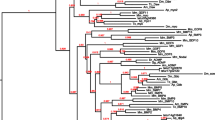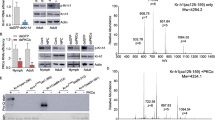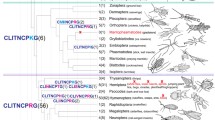Abstract
The cellular response to steroid hormones is mediated by nuclear receptors which act by regulating transcription. In Drosophila melanogaster, the receptor for the insect molting hormone, 20-hydroxyecdysone, is a heterodimer composed of the Ecdysone Receptor and Ultraspiracle (USP) proteins. The DNA binding domains of arthropod USPs and their vertebrate homologs, the retinoid X receptor (RXR) family, are highly conserved. The ligand binding domain sequences, however, divide into two distinct groups. One group consists of sequences from members of the holometabolous higher insect orders Diptera and Lepidoptera, the other of sequences from vertebrates, a crab and a tick. We here report the sequence of an RXR/USP from the hemimetabolous orthopteran, Locusta migratoria. The locust RXR/USP ligand binding domain clearly falls in the vertebrate-crab-tick rather than the dipteran-lepidopteran group. The reason for the evolutionarily abrupt divergence of the dipteran and lepidopteran sequences is unknown, but it could be a change in the type of ligand bound or the loss of ligand altogether.
Similar content being viewed by others
Author information
Authors and Affiliations
Additional information
Received: 25 February 1999 / Accepted: 20 March 1999
Rights and permissions
About this article
Cite this article
Hayward, D., Bastiani, M., Trueman, J. et al. The sequence of Locusta RXR, homologous to Drosophila Ultraspiracle, and its evolutionary implications. Dev Gene Evol 209, 564–571 (1999). https://doi.org/10.1007/s004270050290
Issue Date:
DOI: https://doi.org/10.1007/s004270050290




